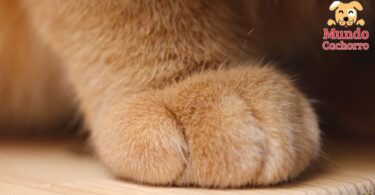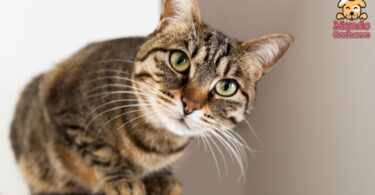Indice
A cat’s tail is not just a decorative appendage. On the contrary, it is a fundamental communication tool that reveals much about your state of mind, your intentions and your emotional well-being. From subtle movements to energetic wagging, each gesture of a cat’s tail has a particular meaning that pet owners can learn to interpret to better understand their feline companions.
Meaning of tail movements in cats
Below, we will explore some of the common meanings behind cat tail wags:
- Tail erect and still:
When a cat holds its tail erect in an upright and relatively still position, it generally indicates confidence and security in its environment. It is a sign that the cat feels comfortable and in control of the situation.
- Tail in slow side-to-side movement:
A slow side-to-side tail wag may mean that the cat is in an alert state or is assessing its environment. You may be watching something with interest or considering your next action.
- Tail vibrating or quivering:
When a cat’s tail quivers or vibrates, it can be a sign of intense emotion, either positive or negative. It may indicate excitement, anticipation or even aggression, depending on the context and other body language signs of the cat.
- Stiff and high tail with curved tips:
A stiff, erect tail with the tips curved forward is often a sign of aggression or agitation. The cat may be feeling irritation, threatened by something in its environment or ready to defend itself.
- Arched tail with erect hair:
When a cat arches its tail and ruffles its fur, it usually indicates that it is frightened or agitated. This posture may be a response to the presence of a perceived threat or an encounter with another animal.
Movements with context
It is important to remember that the interpretation of a cat’s tail movements must be made by considering the context and observing other signs of body language and behavior. Each cat is unique and may have its own variations in the way it communicates its emotions through its tail. By paying attention to these subtle signs, pet owners can strengthen their bond with their cats and respond more effectively to their emotional and behavioral needs.
- Low tail or between the legs:
A tail hanging down or placed between the legs usually indicates submission, fear or discomfort. The cat may feel intimidated by a situation or be experiencing anxiety.
- Tail wrapped around the body:
When a cat wraps its tail around its body, it can be a sign of comfort and relaxation. This may occur when the cat is curled up, sleeping or feeling safe and comfortable in its environment.
- Tail that moves quickly or hits the ground:
Rapid tail movements, such as repeatedly thumping the ground, often indicate irritation, frustration or even aggression. The cat may be expressing displeasure or discomfort in response to something that bothers it.
Image courtesy of https://pixabay.com, all rights reserved.







